Category: Thermoplastic Polyurethane Elastomer
Thermoplastic polyurethane elastomer, also known as TPU, is a type of (AB)n block linear polymer. A represents a high molecular weight (1000~6000) polyester or polyether, and B represents a diol containing 2~12 straight chain carbon atoms. The chemical structure between AB segments is diisocyanate. Thermoplastic polyurethane rubber relies on intermolecular hydrogen bonding cross-linking or mild cross-linking between macromolecular chains. With the increase or decrease of temperature, these two cross-linking structures have reversibility. In the molten state or solution state, the intermolecular force between molecules weakens, and after cooling or solvent evaporation, strong intermolecular force connects them together to restore the original solid performance. Typical TPU includes spandex, etc.

Brief Introduction
Thermoplastic polyurethane elastomer (TPU) is a type of elastic material that can be plasticized by heating and dissolved by solvents. It has excellent comprehensive properties such as high strength, high toughness, wear resistance, and oil resistance, as well as good processing performance. It is widely used in industries such as national defense, medical, and food.
With its excellent performance and wide application, thermoplastic polyurethane elastomer has become one of the important thermoplastic elastomer materials. Its molecules are basically linear and have little or no chemical cross-linking. There are many physical cross-links composed of hydrogen bonds between linear polyurethane molecular chains, and hydrogen bonds play a role in strengthening their morphology, thereby endowing many excellent properties such as high modulus, high strength, excellent wear resistance, chemical resistance, hydrolysis resistance, high and low temperature resistance, and mold resistance. These excellent properties make thermoplastic polyurethane widely used in many fields such as footwear, cables, clothing, automobiles, medical and health, pipes, films, and sheets. The final product generally does not require vulcanization cross-linking, which can shorten the reaction cycle and reduce energy consumption. Since it is basically a linear structure polymer, the same technology and equipment as thermoplastic plastics can be used for processing, such as injection molding, extrusion, blow molding, and calendering, especially suitable for mass production of medium and small-sized parts. Waste materials can be recycled and reused, and different additives or fillers can be used in the production or processing process to improve certain physical properties and reduce costs.
Classification
Thermoplastic polyurethane elastomers can be divided into two types: polyester type and polyether type. They are white irregular spherical or columnar particles with a density of 1.10~1.25g/cm3. The relative density of polyether type is smaller than that of polyester type. The glass transition temperature of polyether type is 100.6~106.1℃, while that of polyester type is 108.9~122.8℃. The brittle temperature of both polyether and polyester types is lower than -62℃, and the low-temperature resistance of polyether type is better than that of polyester type.
Characteristic
The outstanding characteristics of thermoplastic polyurethane elastomers are excellent wear resistance, extremely good ozone resistance, high hardness, high strength, good elasticity, and low-temperature resistance. They also have good oil resistance, chemical resistance, and environmental resistance. In humid environments, the hydrolysis stability of polyether type is far superior to that of polyester type.
New Technologies and New Uses
TPU is a rapidly developing industry, with new technologies, products, and applications emerging constantly. TPU has been widely used in various industries, including footwear, clothing, pipes, films and sheets, cables, automobiles, construction, healthcare, defense, and sports and leisure. TPU is recognized as a green and environmentally friendly new type of polymer material with excellent performance. Currently, TPU is mainly used in low-end consumption, while high-end consumption is dominated by some multinational companies, including Germany’s Bayer and BASF, and the United States’ Lubrizol and Huntsman, which are increasing their research and development efforts on new products. High value-added TPU products are constantly being developed and put into the market, and TPU materials have become one of the fastest-growing thermoplastic materials.
- Footwear: sports shoe logos, sports shoe air cushions, hiking shoes, snow boots, golf shoes, ice skates, and fabric and lining materials.
- Clothing: ski jackets, raincoats, windbreakers, cold-proof jackets, field uniforms, diapers, physiological pants, and fabric composite materials (waterproof and breathable).
- Medical: surgical gowns, hats, shoes, hospital pads, ice bags, bandages, plasma bags, surgical bandages, masks, and fabric and lining materials, surgical bed airbags.
- Defense products: aircraft fuel tanks, weapon storage films, tent windows, military water bags, life jackets, inflatable boats, and fabric and lining materials, airbags.
- Sports equipment: soccer surfaces and inner tubes, inflatable beds, water bags, ski gloves (waterproof bags), diving suits, ski jackets, swimsuits, skis, logos, airbags, sports shirts, slimming clothes, and fabric and lining materials.
- Industrial products: speaker drum paper rubber edges, waterproof strips, sound insulation materials, fireproof materials, fireproof clothing, fireproof cloth, and fabric and lining composite materials, wire and cable outer sheath materials.
- Other uses: mobile phone keys, plastic inflatable toys, bed sheets, tablecloths, shower curtains, furniture fabrics, aprons, pianos, computer keyboards, film coatings, and fabric and lining materials.
Advantages of TPU

Thermoplastic polyurethane (TPU) is a versatile material that has a wide range of applications in various industries. It is a type of polymer that is known for its excellent properties such as high elasticity, durability, and resistance to abrasion, chemicals, and UV radiation. In this article, we will discuss the advantages of TPU in detail. One of the main advantages of TPU is its high elasticity. It can be stretched up to 600% of its original length without breaking, makingRead More …
TPU Material – Comprehensive Analysis
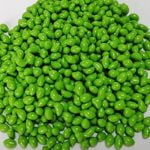
What is TPU TPU is thermoplastic polyurethane, a type of polyurethane that can be heated and molded, and dissolved in solvents. Compared with blended and cast polyurethane, thermoplastic polyurethane has little or no chemical cross-linking in its chemical structure, and its molecules are basically linear, but there is a certain amount of physical exchange. The concept of physical exchange was first proposed by Schollenberge C.S. in 1958, which refers to the “connection points” between linear polyurethane molecular chains that areRead More …
What is TPU Plastic?
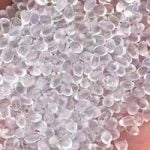
TPU stands for thermoplastic polyurethane, which is a type of plastic that is known for its flexibility, durability, and resistance to abrasion and chemicals. It is a versatile material that is used in a wide range of applications, including footwear, automotive parts, medical devices, and consumer electronics. TPU is a type of thermoplastic, which means that it can be melted and molded into different shapes and forms. It is made by combining a polyol and a diisocyanate, which react toRead More …
Difference and Characteristics of TPU, Rubber and Silicone
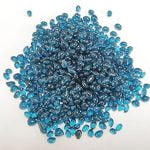
Definition TPU Definition: TPU is a type of thermoplastic elastomer (TPE), which stands for thermoplastic polyurethane elastomer. It is environmentally friendly, non-toxic, and recyclable. TPU has excellent wear resistance, elasticity, and oil resistance. Its hardness ranges from 70A to 98A, and its original color is transparent. Rubber Definition: Rubber can be divided into natural rubber and synthetic rubber according to the raw materials. Natural rubber is extracted from rubber trees, while synthetic rubber is artificially synthesized. Rubber has different typesRead More …
ETPU plastic ground construction process

ETPU (Expanded thermoplastic polyurethane) is a popcorn-like material. After being subjected to pressure and heat treatment, the volume of TPU particles will increase by 10 times, forming elliptical non-crosslinked foaming particles with micro-closed bubbles inside, resembling “popcorn”. ETPU material has high elasticity and can effectively absorb impact and reduce injuries caused by falls and accidents. This product is widely used in sports stadiums, school sports grounds, and increasingly in urban fitness trails, greenways, and kindergarten play areas. The Specific Construction ProcessRead More …
ETPU Steam Heating Molding VS Microwave Heating Molding

ETPU, which stands for Expanded Thermoplastic Polyurethane Elastomer, originated from BASF in Germany in 2007. It is produced by using TPU resin as raw material and employing physical foaming technology to develop non-crosslinked TPU foam beads material (ETPU). Each TPU particle expands like popcorn, forming elliptical shapes with micro-closed bubbles inside, which is why ETPU is often referred to as “popcorn”. ETPU exhibits excellent resilience and cushioning properties, making it widely used in footwear, plastic tracks, lightweight tires, and variousRead More …
Glass Fiber Reinforced TPU
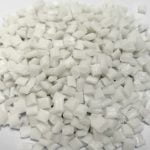
PECOAT® Glass Fiber Reinforced TPU A certain proportion of glass fiber is added to enhance the physical and chemical properties of TPU. This makes the product high in strength, wear-resistant, flexible, low in water absorption, and high in elasticity. Product Features Good insulation Strong heat resistance Good corrosion resistance High mechanical strength Use The product is widely used in special applications such as electronic plugs, automotive parts, mechanical parts, ships, aerospace, and electronic housings. TPU Modified
Matte Modified TPU

PECOAT® Matte Modified TPU PECOAT® Matte modified TPU materials are mostly used in online cable products, which can achieve flame-retardant delicate glossy TPU, flame-retardant delicate matte TPU, and non-flame-retardant matte TPU. Our company can meet customers’ different requirements. Product Features Low smoke and halogen-free, low odor, environmentally friendly; low-temperature flexibility, good weather resistance and water resistance, superior antimicrobial performance. Use: The product is widely used in charging pile cables, mineral cables, submarine cables, robot cables, drag chain cables, films, andRead More …
Injection Molding Overmolding
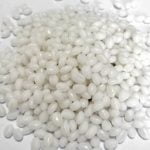
PECOAT® Injection Molding Overmolding TPU As the name suggests, TPU overmolding is the process of overmolding TPU pellets onto other materials. The general processing methods for TPU overmolding are one-time molding with a two-color injection molding machine, or two-stage injection molding with an overmolding mold using a regular injection molding machine. Overmolding is one of the most important molding methods or applications for TPU. Through overmolding, various functional characteristics of TPU materials can be fully demonstrated, such as soft touchRead More …
TPU Alloy
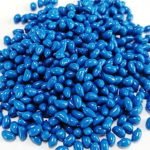
PECOAT® TPU Alloy TPU is modified by blending with other high molecular polymers, fully utilizing TPU’s elasticity and wear resistance, introducing the characteristics of other high molecular polymers, complementing each other’s strengths and weaknesses, perfectly expressing TPU’s characteristics, and enhancing other properties of TPU. The product is mainly used in low-hardness rapid prototyping electronic products, complex thin-walled products, dirt-resistant, oil-resistant and other products. TPU+PC Alloy Polycarbonate is hard and tough, with high impact resistance, dimensional stability, a wide range ofRead More …
